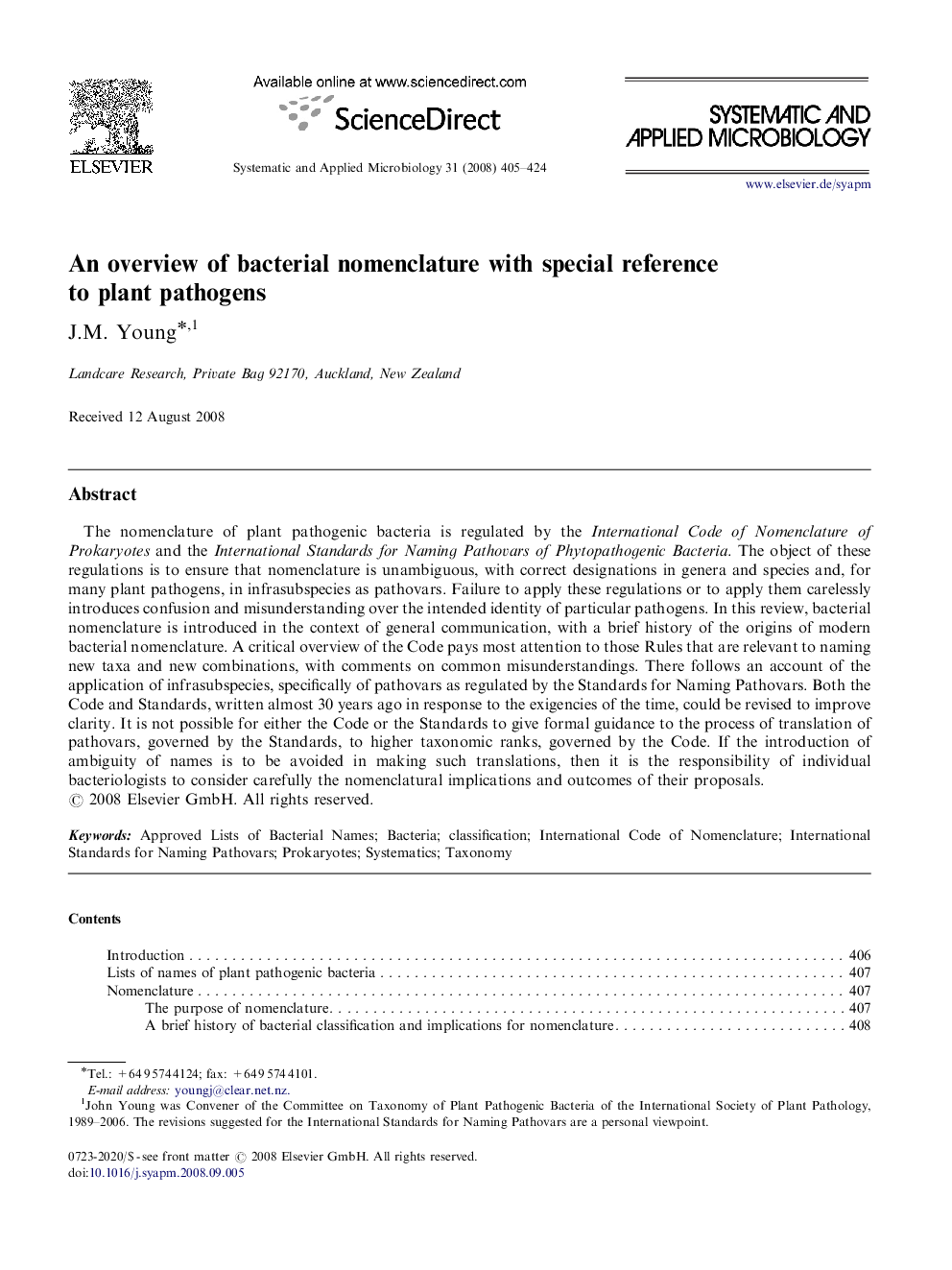| Article ID | Journal | Published Year | Pages | File Type |
|---|---|---|---|---|
| 2063204 | Systematic and Applied Microbiology | 2008 | 20 Pages |
The nomenclature of plant pathogenic bacteria is regulated by the International Code of Nomenclature of Prokaryotes and the International Standards for Naming Pathovars of Phytopathogenic Bacteria. The object of these regulations is to ensure that nomenclature is unambiguous, with correct designations in genera and species and, for many plant pathogens, in infrasubspecies as pathovars. Failure to apply these regulations or to apply them carelessly introduces confusion and misunderstanding over the intended identity of particular pathogens. In this review, bacterial nomenclature is introduced in the context of general communication, with a brief history of the origins of modern bacterial nomenclature. A critical overview of the Code pays most attention to those Rules that are relevant to naming new taxa and new combinations, with comments on common misunderstandings. There follows an account of the application of infrasubspecies, specifically of pathovars as regulated by the Standards for Naming Pathovars. Both the Code and Standards, written almost 30 years ago in response to the exigencies of the time, could be revised to improve clarity. It is not possible for either the Code or the Standards to give formal guidance to the process of translation of pathovars, governed by the Standards, to higher taxonomic ranks, governed by the Code. If the introduction of ambiguity of names is to be avoided in making such translations, then it is the responsibility of individual bacteriologists to consider carefully the nomenclatural implications and outcomes of their proposals.
